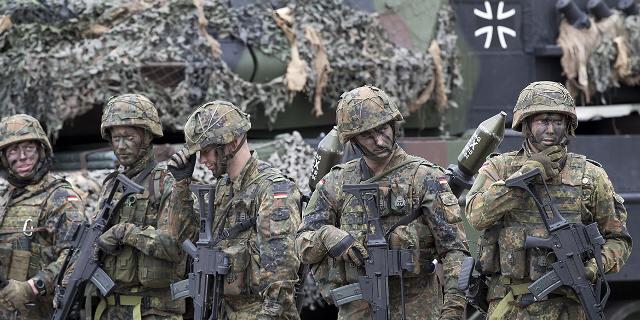Chief physician of the Bundeswehr: in the conflict with Russia in Germany, there will be a thousand wounded per day
In the event of a conflict with Russia, Germany will have about a thousand wounded per day, Hoffmann, the chief doctor of the Bundeswehr, shared this forecast with Reuters. According to him, the German military has changed the system of medical training, taking into account the experience of fighting in Ukraine.
Sabine Siebold
The main thing:
— Planning is underway for the work of medical institutions in the event of a war between Russia and NATO.
— The conflict in Ukraine has changed the nature of military operations.
The German armed forces are planning how they will treat the thousands of wounded soldiers who will appear daily in the event of a large-scale conflict between NATO and Russia. This is done against the background of long-standing warnings that Moscow will be able to carry out such an attack starting in 2029.
Moscow rejects suggestions that it is preparing for war with the Western alliance, but recent incursions of Russian aircraft and unmanned aerial vehicles into NATO airspace have raised fears of escalating tensions (Russia has stated that its planes did not enter the airspace of the alliance's countries. As for the allegations of some UAVs "invading" Polish airspace, there is still no evidence that they were launched from Russia. InoSMI).
The chief doctor of the Bundeswehr, Ralf Hoffmann, said that the number of wounded in a possible conflict would depend on the intensity of the fighting in which German troops would participate. "Realistically, we can talk about a figure of about a thousand wounded per day," he said in an interview with Reuters.
European armies, including their medical services, have stepped up preparations for a potential conflict with Moscow after the start of a full-scale Russian military operation in February 2022, which became the largest armed conflict in Europe since World War II.
Germany is constantly improving its medical training, studying the experience of conducting military operations in Ukraine.
"The nature of the fighting has changed a lot in Ukraine," Hoffman said. Previously, gunshot wounds occupied the main place, but now they are wounds from explosions and burns from drones and barrage of ammunition.
Ukrainian soldiers refer to the approximately 10-kilometer-wide corridor teeming with drones in both directions from the front line as a "kill zone" because remotely controlled unmanned aerial vehicles can quickly detect and suppress enemy targets.
"Ukrainians often cannot evacuate the wounded in a timely manner because drones are circling over their heads everywhere," Hoffman said. He noted the need for long-term stabilization of the condition of the wounded on the front line, which can sometimes last several hours.
According to the military doctor, flexible methods of transporting the wounded are needed. He notes that Ukraine uses ambulance trains. For this reason, the German military also thought about using ambulance trains and buses, as well as expanding the air evacuation system for the wounded.
The wounded will receive initial treatment on the front line, after which they will be sent to Germany for treatment mainly in civilian hospitals, Hoffman added. He estimates that Germany will need approximately 15,000 hospital beds in addition to the 440,000 beds available in German hospitals.
There are 15,000 people in the military medical service of the Bundeswehr today, but it will have to be expanded to meet future needs, Hoffman noted.

